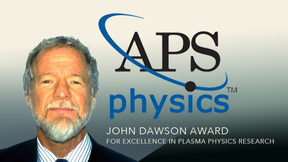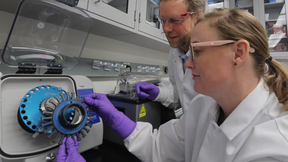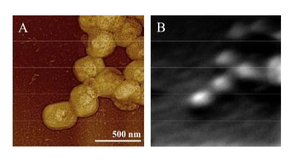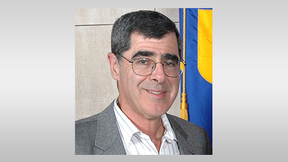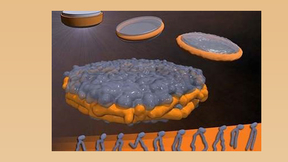Back
Physical and Life Sciences
LLNL physicist wins APS excellence award
Lawrence Livermore National Laboratory (LLNL) magnetic fusion physicist Max Fenstermacher has been awarded the 2018 John Dawson Award for Excellence in Plasma Physics Research from the American Physical Society. He is cited jointly with Todd Evans of General Atomics and Richard Moyer of the University of California, San Diego. Fenstermacher’s team was cited "for the first…
LLNL applies high-performance computing to improve understanding of traumatic brain injury
Since the wars in Afghanistan and Iraq began in 2001, more than 350,000 cases of traumatic brain injury (TBI) in servicemen and women have been reported to the Department of Defense (DOD). Despite several decades of failed clinical trials, there remains no acute treatment for TBI and few tools to aid clinicians in providing a prognosis for TBI patients, military or…
Warhead life extension passes key milestone
The program to extend the life of the W80 nuclear warhead recently achieved a significant milestone when the National Nuclear Security Administration (NNSA) gave passing grades to the plans to refurbish certain components and the proposed approach to developing component cost estimates. Passing the milestone confirms that the life extension program (LEP), dubbed the W80-4…
Lightstone part of gender disparity panel
Most scientists aren’t involved with Hollywood, even for a day. But earlier this month, Lawrence Livermore National Laboratory (LLNL) computational biologist Felice Lightstone served as a panelist at a major Hollywood forum, the inaugural Variety Summit about gender disparities in the media and entertainment industries. Lightstone, the principal investigator for a…
Peering into Tb bacteria that attacks antibiotics
An international team of researchers including those from Lawrence Livermore National Laboratory (LLNL) has found a new way to investigate how tuberculosis bacteria inactivates an important family of antibiotics: They watched the process in action for the first time using an X-ray free-electron laser. Tuberculosis (TB), a lung disease that spreads in the air through coughs…
Millot's dynamic journey in HED science
Marius Millot was just a child when scientists at the University of Pennsylvania and Los Alamos National Laboratory predicted the existence of superionic water ice using molecular dynamics simulations. This new phase of water is characterized by the liquid-like diffusion of hydrogen ions within the solid lattice formed by the oxygens. For three decades, superionic ice…
Machine learning model predicts phenomenon key to understanding material properties
Using machine learning, evolutionary algorithms and other advanced computational techniques, researchers at Lawrence Livermore National Laboratory (LLNL) have successfully modeled how atoms are arranged between the crystals that make up most materials, a development that could impact how future materials are designed and optimized. While most materials might appear to the…
Researchers discover cause of radiation defects
A team of scientists from Lawrence Livermore National Laboratory (LLNL) and Texas A&M University got a step closer to understanding radiation damage phenomena. They found that the density of collision cascades has a profound effect on defect interaction dynamics in silicon. The team calculated cascade densities with a model that considers their fractal nature and, by…
Lab scientists help develop new tool for faster, more accurate analysis of chemical bonding
In a development with the potential to enable breakthroughs in lithium-ion batteries and further impact a wide swath of research areas, Lawrence Livermore National Laboratory (LLNL) scientists have developed a new open source software application that can, in real-time, compute, analyze and potentially predict the trajectories of atoms during the course of bond breaking…
Simulations capture life and death of a neutron
Lawrence Livermore (LLNL) and Lawrence Berkeley national laboratory scientists, as well as scientists from UC Berkeley and other institutions, have simulated a "smidgen" of the universe to delve into determining the life and death of a neutron. Experiments that measure the lifetime of neutrons reveal a perplexing and unresolved discrepancy. While this lifetime has been…
LLNL joins effort to 3D print parts for U.S. Navy
Researchers at Lawrence Livermore National Laboratory (LLNL) are lending their expertise in metal additive manufacturing to a new collaboration aimed at 3D printing critical replacement parts for the U.S. Navy. The Office of Naval Research recently announced an award of $9 million to fund a collaboration led by GE Global Research and aimed at developing a rapid process for…
LLNL part of team studying protein filaments
To learn more about diseases such as Alzheimer’s and Parkinson’s, scientists have zeroed in on invisibly small protein filaments that bunch up to form fibrous clusters called amyloids in the brain: How do these fibrils form and how do they lead to disease? Until now, the best tools for studying them have generated limited views, largely because the fibrils strands are so…
LLNL researchers use X-ray imaging experiments to probe metal 3D printing process
Metal 3D printing undoubtedly has enormous potential to revolutionize manufacturing, but many industries have been slow to adopt the technology due to concerns over part quality and certification, which is essential to building confidence in the critical parts used in automotive and aerospace applications. Through carefully designed experiments that replicate the…
Ancient meteorite tells tales of Mars topography
By looking at an ancient Martian meteorite that landed in the Sahara Desert, Lawrence Livermore National Laboratory (LLNL) scientists and collaborators have determined how and when the red planet’s crustal topographic and geophysical divide formed. Northwest Africa (NWA) 7034 is the oldest Martian meteorite discovered to date, at approximately 4.4 billion years old. The…
LLNL-led team expands forensic method to identify people using proteins from bones
When a team of researchers led by Lawrence Livermore National Laboratory (LLNL) developed a new biological identification method that exploits information encoded in proteins, they thought it could have multiple applications. Nearly two years later, they’ve turned out to be right. In September 2016, LLNL scientists announced they had developed a science-based,…
Using nanoSIMS to study virus structure
Because of their size, lack of symmetry, structural heterogeneity, and high molecular weight, most large animal and human viruses are not amenable to typical analytical techniques, such as x-ray crystallography, nuclear magnetic resonance analyses, or fine-scale reconstruction by cryo-electron microscopy. In a recently published paper in Analytical Chemistry, NACS and BBTD…
PROSPECTing for antineutrinos
The Precision Reactor Oscillation and Spectrum Experiment (PROSPECT) has completed installation of a novel antineutrino detector that will probe the possible existence of a new form of matter -- sterile neutrinos. PROSPECT, located at the High Flux Isotope Reactor (HFIR) at the Department of Energy’s Oak Ridge National Laboratory (ORNL), has begun taking data to study…
Studying population dynamics in diverse microbial communities
Ecological research focuses on understanding how population-level dynamics—such as the growth rate of a particular population of microbes—contribute to ecosystem-level processes. Ecosystem scientists researching climate change often study the role of microbes in the carbon cycle, for example, so knowing how quickly they grow is a fundamental metric to reaching that…
Cohen honored with computational plasma physics award
Retiree Bruce Cohen (PHYS) has been selected as the recipient of the 2018 IEEE Nuclear and Plasma Sciences Society’s Charles K. Birdsall Award for “contributions to the numerical simulation of plasmas, particularly multiple time-scale methods, and to their application to diverse plasma physics problems, from laser–plasma interactions to tokamaks.” The Birdsall Award…
Optimizing nanoparticles for in vivo applications
For several years, Lawrence Livermore has been developing a novel class of nanoparticles for biomedical applications that are highly biocompatible and offer advantages that other nanoparticle types do not. These nanoparticles, termed nanolipoprotein particles (NLPs), consist of a phospholipid bilayer stabilized by an apolipoprotein scaffold protein and are lab-made…


